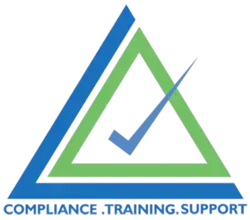You know how it goes, you’re already juggling three MOTs, there are two customers pacing the waiting room, and someone’s just dropped off a car for an MOT re-test that “needs to be done right now.”
And then, like clockwork, someone utters those famous last words:
“Mate, can you just do a quick re-test? Won’t take a minute.”
If only DVSA handed out medals for multi-tasking under pressure. Unfortunately, what they do hand out are investigations if you skip corners.
So let’s talk about what a re-test really means, and why “quick” is a word best left for oil changes, not MOT paperwork.
First things first: what does the VT9a say about MOT re-tests?
There are three main scenarios you’ll come across:
Scenario 1: Vehicle is taken away for repair and brought back before the end of the next working day for one of the items listed below → Partial re-exam, no fee.
| Access panels Battery Bonnet Boot lid Brake pedal anti-slip Break glass hammer** Doors (including hinges, catches & pillars) Door open warning device ** Dropsides Electrical wiring Emergency exits and signs ** |
Entrance door remote control ** Entrance/exit steps ** Fuel filler cap Headlamp cleaning or levelling devices (not requiring a headlamp aim check) Horn Lamps (excluding headlamp aim) Loading door Main beam ‘tell-tale’ Mirrors Rear reflectors |
Registration plates Seat belts (but not anchorages) Seat belt load limiter Seat belt pre-tensioner Seats Sharp edges or projections Stairs ** Steering wheel Tailboard Tailgate Towbars (excluding body around anchorage points) |
Trailer electrical sockets Tyre pressure monitoring system Vehicle identification number (VIN) Windscreen and glass Windscreen wipers/washers Wheels and tyres *
|
* Excludes Class 1 & 2
** Class 5 only
Scenario 2: Vehicle is repaired on site and re-tested within 10 working days → Partial re-exam, no fee.
Scenario 3: Vehicle is taken away and comes back within 10 working days → Partial re-exam, partial re-test fee may be charged.
Only one re-test is allowed per full MOT.
Seems simple enough right…but the important bit is what you actually do during that re-test.
What does a re-test involve?
According to the MOT Guide (section B.5, for those of you who like bedtime reading):
- You must check all the failed defects (dangerous and major).
- You must check anything else that might have been affected by the repair.
- You must do another roller brake test if required, record the results, and check headlamp aim where relevant.
- You should also check any advisories or minor defects recorded originally and mark them as repaired if the work’s been done.
REMEMBER! only one partial re-test is allowed. Anything else, and it’s a full MOT again.
Let’s put this into practice
Vehicle 1
Failed on: 2 pitted brake discs, one tyre to cords, and headlamp aim too high.
All work was done on-site by the MOT tester himself.
Can he log on, delete defects, and be done in 20 seconds?
No! Even if you did the repair yourself, you still need to:
- Bring the car to the MOT bay
- Log the re-test
- Check the new tyre on the ramp
- Do a Roller Brake Test
- Check headlamp aim
- Then log it off and print the paperwork.
Vehicle 2
Failed on: Exhaust leak.
Advisory for: Brake pads.
The exhaust fixed by another tech (not the MOT tester) and the brake pads were also changed.
Can the re-test take 40 seconds?
No! Even if you saw your mate fit the exhaust, you still need to:
- Bring it to the MOT bay
- Log the re-test
- Run an RBT
- Carry out an emissions test
- Log it off properly
Vehicle 3
Failed on: Four bald tyres.
The owner took it straight to her favourite tyre fitter, then drove 25 miles back.
Can you check it in a minute?
No.
- Get it on the ramp
- Log the re-test
- Inspect all four tyres properly (size, load rating, condition)
- Log it off, issue the paperwork
The “quick re-test” myth
The thing is, it doesn’t matter if:
- You watched your colleague replace the part
- You trust him because you’ve worked together for years
- Workshop control says “just sign it off mate, it’s fine”
The rules are clear: “Examine all the failed defects (dangerous and major) along with any items that may have been affected by repairs carried out since the initial test.”
Skip that step, and it’s not just your tester status on the line. If DVSA discover you’ve been doing cut-corner re-tests, it means:
- You can expect an investigation (yes, the formal sit-down-with-DVSA kind).
- Your Site Manager or AEDM could get dragged in too.
- You might find yourself looking at training requirements or worse.
All because of a “quick re-test” that wasn’t quick at all.
So…
Re-tests might feel like a nuisance when the workshop’s busy, but cutting corners isn’t worth the risk.
Do it properly, every time.
So next time someone says “just do us a quick one”, smile, point them towards the VT9a, and remind them:
The only quick re-test is the one that gets you into trouble.
Need help ensuring you’re fully compliant? Drop us a message, we’re always happy to help.

